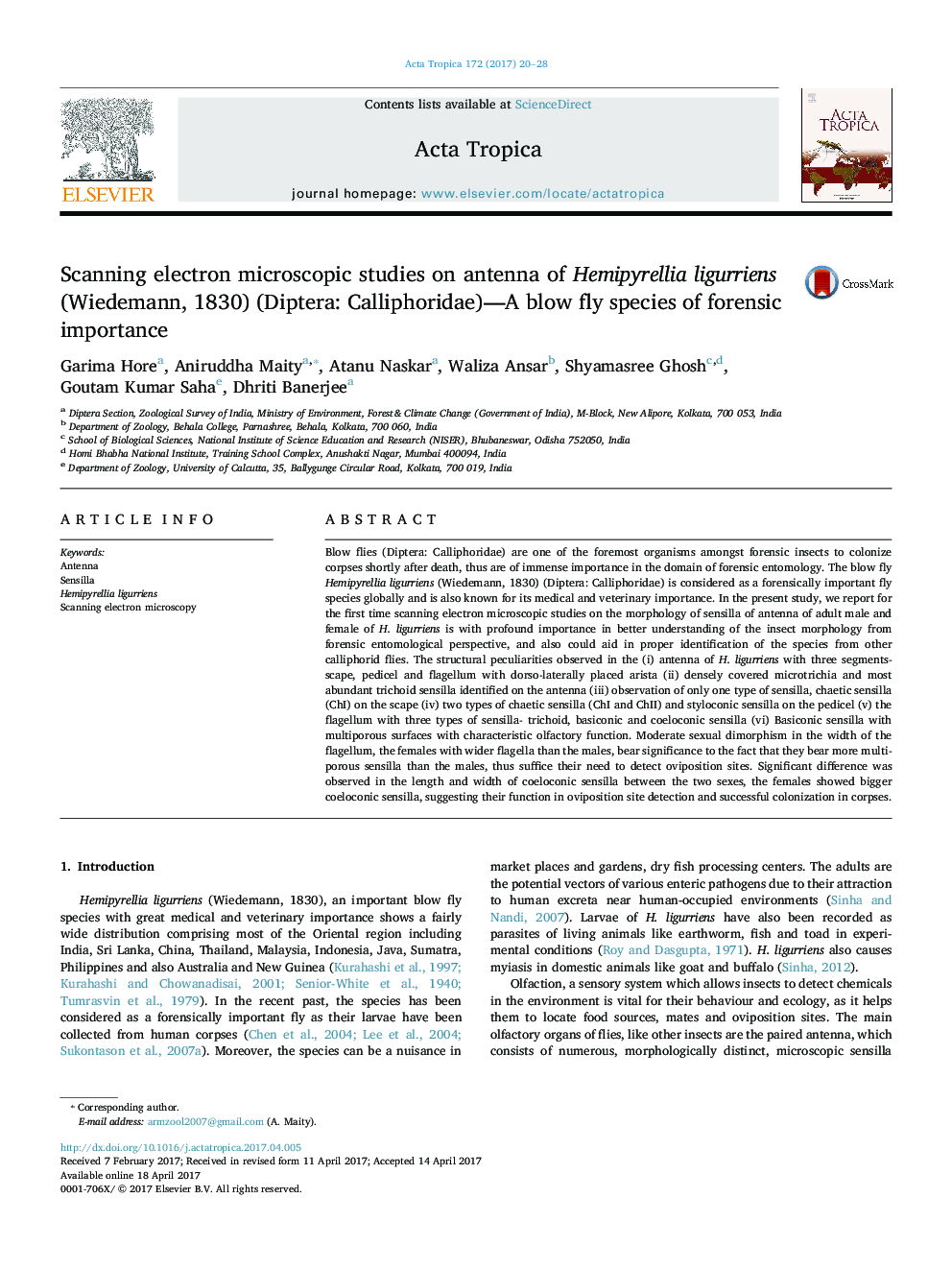| کد مقاله | کد نشریه | سال انتشار | مقاله انگلیسی | نسخه تمام متن |
|---|---|---|---|---|
| 5671113 | 1592752 | 2017 | 9 صفحه PDF | دانلود رایگان |

- Present study is carried out for the first time so as to generate a baseline data applicable in forensic entomology.
- Five different types of sensilla and numerous microtrichiae were observed on the antennal surface.
- Chaetic sensilla were found on the scape and pedicel; styloconic sensilla found only on the pedicel.
- Trichoid, basiconic and coeloconic sensilla were observed only on the flagellum.
- Coeloconic sensilla was observed to be larger in females, aid to serve the purpose of oviposition site detection in female.
Blow flies (Diptera: Calliphoridae) are one of the foremost organisms amongst forensic insects to colonize corpses shortly after death, thus are of immense importance in the domain of forensic entomology. The blow fly Hemipyrellia ligurriens (Wiedemann, 1830) (Diptera: Calliphoridae) is considered as a forensically important fly species globally and is also known for its medical and veterinary importance. In the present study, we report for the first time scanning electron microscopic studies on the morphology of sensilla of antenna of adult male and female of H. ligurriens is with profound importance in better understanding of the insect morphology from forensic entomological perspective, and also could aid in proper identification of the species from other calliphorid flies. The structural peculiarities observed in the (i) antenna of H. ligurriens with three segments- scape, pedicel and flagellum with dorso-laterally placed arista (ii) densely covered microtrichia and most abundant trichoid sensilla identified on the antenna (iii) observation of only one type of sensilla, chaetic sensilla (ChI) on the scape (iv) two types of chaetic sensilla (ChI and ChII) and styloconic sensilla on the pedicel (v) the flagellum with three types of sensilla- trichoid, basiconic and coeloconic sensilla (vi) Basiconic sensilla with multiporous surfaces with characteristic olfactory function. Moderate sexual dimorphism in the width of the flagellum, the females with wider flagella than the males, bear significance to the fact that they bear more multi-porous sensilla than the males, thus suffice their need to detect oviposition sites. Significant difference was observed in the length and width of coeloconic sensilla between the two sexes, the females showed bigger coeloconic sensilla, suggesting their function in oviposition site detection and successful colonization in corpses.
102
Journal: Acta Tropica - Volume 172, August 2017, Pages 20-28